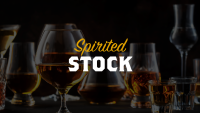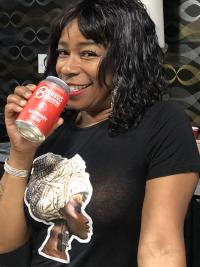
On the heels of a year of rapid growth, the no-alcohol movement isn’t expected to slow down in 2024. One area where it has had a profound effect is on non-alcoholic (non-alc) beer.
Nielsen IQ reported that sales of non-alc beer totaled nearly half a billion dollars in 2023—and that's just off-premise sales.
The days of bad-tasting, shame-inducing non-alc beers are now over. Today’s brewers are introducing innovative flavor combinations, flashy and eye-catching packaging, and most importantly, non-alcoholic brews that match-up in taste to their alcoholic counterparts.
We spoke with some of the top non-alc brewers as well as the managing partner at a California taproom to get a sense of what this all means for the on-premise.
What's Behind the Growth of Non-alcoholic Beer
The main catalyst for the growth of non-alc beer parallels the reason for the growth of the overall non-alc category—health and wellness. Gallup’s 2023 Consumption Habits Survey found that a record-high 39% of Americans now say that consuming one to two drinks a day is bad for one’s health, an 11-point increase since Gallup last asked the question in 2018.
“People are sick of feeling like shit,” said Joe Chura, co-founder of Go Brewing, candidly. “More and more studies state that anything greater than zero drinks is not optimal. While many aren’t cutting cold turkey, many people are becoming sober curious and exploring moderation more than before.”
As the a new generation comes into legal drinking age, they are also helping to propel the popularity of non-alc beer through a focus on wellness. “Post-pandemic, it's skewed, quite young towards Gen Y and Gen Z,” says Philip Brandes, founder of Bravus Brewing Company. “I think they're looking more for a fun, innovative, and functional beverage. Things that do something for them, whether it's adaptogens, nootropics, etc.”
Bill Shufelt, co-founder and CEO of Athletic Brewing Company, adds that today’s busy lifestyle has helped the category as there are now many new drinking opportunities where alcoholic beverages aren’t always ideal. “Until recently, the adult beverage market had not adapted to the busy, modern, always-connected lifestyle. Consumers are looking for flavorful alcohol alternatives for those moments when full-strength options don’t make sense—all without sacrificing taste or experience,” he says. “Now there’s a robust array of compelling, innovative non-alcoholic options that have unlocked a variety of new drinking occasions.”
Why Today's Non-Alcoholic Beer is Different
Another big reason non-alc beers are catching on is the improved quality and taste; these aren’t what your dad had for options. “We have to make it taste better, and then people will start listening,” says Brandes.
In fact, many companies are putting out non-alc options that rival or match the taste of alcoholic beers. “It was not good before, and now it is,” says Chura. “We have created a methodology to make a beer that tastes just like its alcoholic counterpart. In blind taste tests at beer fests, 50% of people can’t distinguish between our beer and an alcoholic version of its style.”

It helps that companies are taking the category seriously and dedicating themselves to specifically making non-alc brews versus it being something that’s an afterthought. “There is a huge difference between offering customers Athletic and legacy non-alcoholic offerings that have slept in back bar fridges for decades,” says Shufelt. “For the first time, the non-alcoholic menu has offerings from a specialist who is 100% focused on crafting high-quality, non-alcoholic brews.”
At Bravus, Brandes takes a page from his former life as a software developer and uses technology to upend the way non-alc beer production is typically approached. He hired an electrobiologist to help. “Most [non-alc] beers take a full strength and then either filter out or distill out, burn off the alcohol, which leads to bad things happening,” he says. “So I said, I want to make [non-alc' beer, let's try to do it as close to making traditional beer as possible. So we don't actually remove the alcohol—we developed this process that just doesn't create a lot of alcohol in the first place.”
The improvement in quality and taste has also helped to eliminate the shame and stigma associated with ordering what was once an inferior option, while positive marketing campaigns are taking efforts even further.
“The category had historically been marketed to penalty box occasions—like designated drivers—and for the first time, it was now being framed as positive and aspirational by Athletic [when we launched in 2018],” says Shufelt. “With some marketing excitement, the stigma of ordering and sharing non-alcoholic beers with friends created a phenomenon where people realized they could have their favorite craft brew anytime and anywhere.”
The On-Premise Has a Role to Play in Non-Alcoholic Beer Sales
Non-alc is certainly having a moment on the shelves in the off-premise, but the on-premise is also seeing demand and interest. Data from Nielsen IQ last year found that one in seven people drink non-alc alternatives when on-premise, a figure that grows to 24% for those under the age of 35.
Patrick Thomas, managing partner at OC Local Taproom in Laguna Niguel, California, has seen demand rise at his establishment. In fact, the taproom goes through roughly two-and-a-half barrels of non-alc Bravus on draft every month. “In the time since we began carrying Bravus, we’ve seen a steady uptick in sales of non-alcoholic beer,” he says. “It’s not too far-fetched to look down the road to a time in the not-too-distant future when on-premise sales of non-alcoholic beer parallel sales in the off-premise.”
The on-premise industry is helping to lead the way in the renewal of the non-alc beer market by not only putting a positive spin on the marketing but also educating the consumer about what’s changed in this space.
“In order for non-alc to succeed, there’s got to be awareness and education because, yeah, it’s had a bad rep. And you can imagine, having a bad rap for so long, people were kind of against it,” says Brandes. “We really have to educate the bar owners, the restaurant owners, the servers to say, ‘Hey, look, this actually tastes good now. And you should try it.’”

Chura of Go Brewing actually recommends that on-premise establishments push tastings. “There is zero harm in sampling [non-alcs] and even testing it on the menu,” he says. “Dry January is a perfect opportunity, as places are losing out if they don’t have an offering, let alone a robust one.”
Thomas agrees. “It pays to sell them just as you would a beer with alcohol,” he says. “At the end of the day, it’s about taste. If the beer is good, people will drink it.”
Where non-alc beer is placed on the menu also matters for making sales. Most of the experts we spoke to agreed that placing non-alc beer in the beer section is best practice. Thomas says it’s a practice they follow at OC Local Taproom, “We list non-alcoholic beers right alongside our beers that contain alcohol. And I’m willing to bet that decision helps sales of non-alcoholic beer, as opposed to relegating it to the ‘soft drink and iced tea’ section of the menu.”
As for what sells, Thomas says, “Listen to your guests and educate your staff. When choosing a [non-alc], the one that tastes like what guests are already used to drinking is the one that’s going to move the needle. We have had best luck with non-alcoholic IPAs due to our heavy craft beer following. More conventional bars with macro beers might try blondes and lighter ales. Also, draft seems to sell much better if you can spare a line, and it saves space. We go through over a keg a week and two or more on busier weeks.”
Operators may also want to look at trending flavors or unique flavor combinations and maybe even eye the trends in the alcoholic beer market. “Mango, for example, was a trending fruit in beer. Our Sunshine State, which is a mango peach tropical IPA, is one of our top sellers,” says Chura. “Other than that, any atypical styles like Double IPAs (for non-alcoholic) or crazy flavor-infused concoctions.”
At Bravus, they are also experimenting with flavors and brews like blood orange and raspberry. Brandes also mentioned the brand’s limited-edition Gravitas brew, which in 2023 was a non-alc barrel-aged bourbon stout. “People are looking for variations,” says Brandes, “something different than what’s out there.”
Are you registered for our Crave and Crave on the Menu newsletters? Sign up today!
Plan to Attend or Participate in the 2024 Bar & Restaurant Expo, March 18-20, 2024
To learn about the latest trends, issues and hot topics, and to experience and taste the best products within the bar, restaurant and hospitality industry, plan to attend Bar & Restaurant Expo 2024 in Las Vegas. Visit BarandRestaurantExpo.com.
To book your sponsorship or exhibit space at the 2024 Bar & Restaurant Expo, contact:
Veronica Gonnello (for companies A to G) e: [email protected] p: 212-895-8244
Tim Schultz (for companies H to Q) e: [email protected] p: 917-258-8589
Fadi Alsayegh (for companies R to Z) e: [email protected] p: 917-258-5174
Also, be sure to follow Bar & Restaurant on Facebook and Instagram for all the latest industry news and trends.
